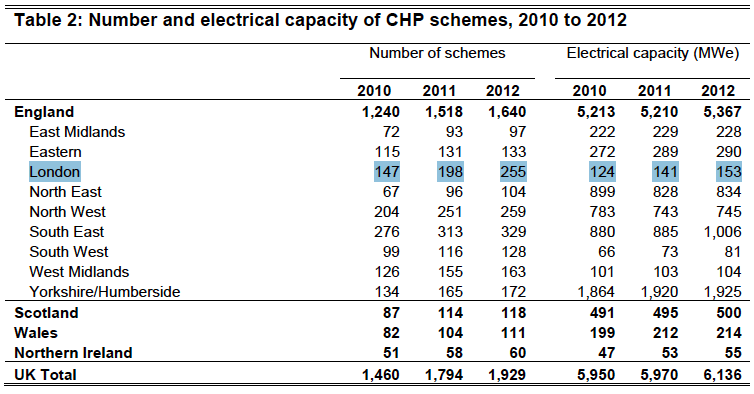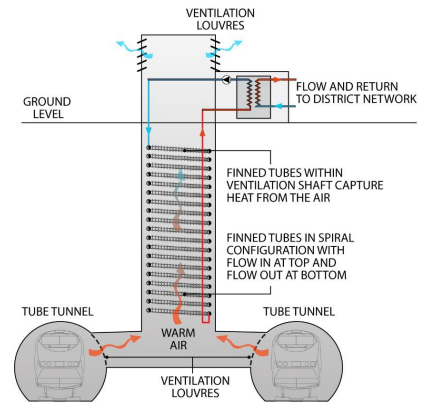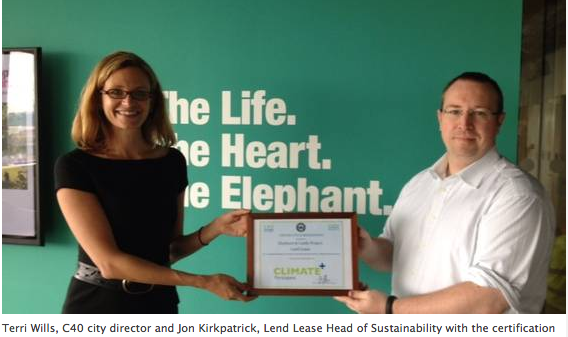Site search:
-
What’s new?
Energy for London Tags
Brent Buildings Camden Carbon Emissions CHP Cities Climate Adaptation Community Heating Community Initiatives Croydon Data DECC Decentralised Energy Distribution ECO Energy Costs Energy Efficiency Enfield FIT Fuel Poverty Funding Green Deal Hackney Haringey Housing Islington Lambeth Library Local Authorities Mayor Newham Ofgem Olympics Photovoltaics Planning RE:FIT RE:NEW Renewable Energy Retrofit Southwark Tower Hamlets Transport Waltham Forest Waste WestminsterEnergy Archives:
- February 2021 (1)
- January 2021 (15)
- December 2020 (15)
- November 2020 (9)
- October 2020 (3)
- August 2020 (5)
- July 2020 (3)
- June 2020 (4)
- April 2020 (10)
- March 2020 (5)
- February 2020 (2)
- January 2020 (3)
- October 2019 (1)
- September 2019 (4)
- August 2019 (2)
- July 2019 (1)
- August 2018 (1)
- November 2016 (8)
- October 2016 (8)
- September 2016 (2)
- August 2016 (8)
- July 2016 (14)
- April 2016 (12)
- March 2016 (16)
- February 2016 (8)
- January 2016 (4)
- December 2015 (1)
- November 2015 (1)
- October 2015 (16)
- September 2015 (3)
- June 2015 (1)
- May 2015 (1)
- April 2015 (1)
- March 2015 (1)
- February 2015 (1)
- January 2015 (1)
- December 2014 (18)
- November 2014 (4)
- August 2014 (8)
- July 2014 (7)
- June 2014 (25)
- May 2014 (8)
- April 2014 (4)
- March 2014 (12)
- February 2014 (7)
- January 2014 (13)
- December 2013 (11)
- November 2013 (15)
- October 2013 (15)
- September 2013 (18)
- August 2013 (5)
- July 2013 (20)
- June 2013 (33)
- May 2013 (8)
- April 2013 (16)
- March 2013 (25)
- February 2013 (14)
- January 2013 (20)
- December 2012 (23)
- November 2012 (23)
- October 2012 (25)
- September 2012 (14)
- July 2012 (12)
- June 2012 (43)
- May 2012 (20)
- April 2012 (8)
- March 2012 (40)
- February 2012 (39)
- January 2012 (40)
- December 2011 (22)
- November 2011 (40)
- October 2011 (33)
- September 2011 (48)
- August 2011 (40)
- July 2011 (58)
- June 2011 (41)
- May 2011 (80)
- April 2011 (38)
- March 2011 (33)
- February 2011 (25)
- January 2011 (24)
- December 2010 (3)
- November 2010 (7)
- October 2010 (6)
- September 2010 (7)
- August 2010 (1)
- July 2010 (2)
- June 2010 (4)
- May 2010 (1)
- March 2010 (3)
- February 2010 (3)
- December 2009 (5)
- November 2009 (2)
- October 2009 (3)
- July 2009 (3)
- June 2009 (1)
- April 2009 (1)
- March 2009 (1)
- February 2009 (1)
- January 2009 (1)
- December 2008 (2)
- October 2008 (1)
- September 2008 (1)
- July 2008 (1)
- March 2008 (2)
- January 2008 (2)
- October 2007 (1)
- September 2007 (3)
- July 2007 (1)
- March 2007 (1)
- February 2007 (3)
- November 2006 (3)
- August 2006 (1)
- February 2006 (1)
- May 2005 (1)
- February 2004 (1)
Author Archives: Admin
Rundown on CHP in London
October 2013: Two recent sources issued by DECC provide data on the use uf Combined Heat and Power (CHP) plant in London. A useful article in DECC’s latest issue of Energy Trends provides a breakdown of CHP use in the regions, providing number of schemes, output, capacity installed and much more. Table 2 from the article is reproduced below.
The data shows a significant increase in the number of CHP schemes operating in London over the past two years (147 – 255) – a 73% jump – whilst generation capacity has grown by 29MW, reflecting the typically smaller scale nature (ie <1MWe) of CHP engines being installed in the capital. Of concern however is that Table 2B (below) from the article reveals that, though the capacity level of CHP has increased – the key metric – the output of decentralised lower-carbon heat and power in London – has actually fallen over the past two years. CHP electricity generation has fallen by 1% and heat generation by 2% in 2012 as compared to 2010 numbers. More promisingly however, the statistics indicate that the 2012 levels show a recovery a far steeper decline in output over the period 2010 to 2011 – so hopefully CHP is now ‘on the up’… Continue reading…
Licence Lite Update
October 2013: There has been little news recently on progress being made for the first ‘license lite’ license to be awarded – however – discussions do continue and below some recent references to the initiative are gathered together.
First, DECC’s Community Energy – Call for Evidence paper published in June 2013 covered the issue stating:
“96. Community renewable electricity projects typically sell their electricity through Power Purchase Agreements (PPAs), whereby an energy supply company agrees to buy electricity from a generator over a fixed period of time at a fixed rate. For community electricity generators it can be difficult to negotiate with large energy supply companies. Aggregators such as Smartest Energy have in the past helped community groups overcome this hurdle. We also recognise that the move from the Renewables Obligation to the Contracts for Difference (CfDs) is a significant one and that the structure of PPAs will need to change, to reflect the changes to the risk profile and the structure of CfDs. The Government has initiated a process to support the market in preparing for the CfD in order to speed this transition and reduce costs.
97. Another route to market for community-generated electricity is Licence Lite, a new form of electricity supply licence, which was proposed by Ofgem in February 2009. The purpose of the licence is to enable smaller scale electricity generators to overcome the costs, risks and complexities of operating in the electricity supply market. If successfully implemented, it will enable them to supply electricity into the retail electricity market and earn a higher market rate than at present for the power they produce.
98. Although no Licence Lite has yet been granted, initial applications have recently been made, including by the Mayor of London, through the Greater London Authority. We hope this will help resolve some of the issues around selling community-generated electricity, and we will be keen to see what evidence comes out of these cases.“
And two recent workshops also provided some information on the background to Licence Lite. At Ofgem’s community energy workshop held in September, Ofgem officials provided a short presentation on the basic benefits of being ‘License Lite’. And law firm Nabarro – who have undertaken significant work in this area for the GLA – held an event in July with a strong focus on licence lite where a helpful presentation was provided by the GLA providing information of their work to date and anticipated further actions. Some previous posts also go into further detail.
London’s secondary heat resource
October 2013: The GLA commissioned a detailed report earlier this year exploring opportunities in London to use high volumes of typically lower-temperature waste heat. Further details on this study – London’s Zero Carbon Energy Resource – can be downloaded here. And a recent presentation made at BRE’s ‘Developing heat networks in the UK ‘ also provides a good summary of some of the findings.
Heat is generated in London’s tube network as a result of trains braking, underground lighting and from passengers. This heat is rejected through ventilated shafts at strategic positions along the network at temperatures ranging typically from 12-29 degrees.
Most secondary heat sources need upgrading to higher temperatures to be useable in heat networks – this requires heat pumps. The minimum suitable temperatures for district heating is 55 degrees. Download the presentation ‘Secondary Heat – London’s Zero Carbon Energy Resource‘ here.
London’s ‘first EfW DH network’
October 2013: A presentation made at BRE’s recent ‘Developing heat networks in the UK ‘ provides a little background – and a few images – behind the new Southwark district energy network taking waste heat from the SELCHP energy from waste (EfW) plant and directing to five nearby housing estates -presentation here (and directly here). Further information on the following post here.
Posted in Decentralised Energy, News
Tagged Community Heating, Decentralised Energy, SELCHP, Southwark
Leave a comment
The BBC’s Climate Change Advisory Group
October 2013: Following on from an earlier post on the BBC’s reporting of climate science – where it emerged the BBC had some time ago established a ‘Climate Change Advisory Group’ – I sent a few emails to the BBC Trust and information service asking for brief details about this particular Group. With no response forthcoming, I then sent an FOI request to the BBC Trust asking for some basic information about the Group:
External Wall Insulation and the Planning System
October 2013: Solid Wall Insulation (SWI) is critical in helping improve the energy efficiency of a large proportion of London’s homes and hence helpful that the GLA’s RE:NEW team have produced a short FAQ document on planning issues around the retrofit of External Wall Insulation (EWI).
The note highlights that a General Permitted Development Order (GPDO) was “clarified in regard to external wall insulation for single houses in technical guidance published by the Department for Communities and Local Government, in January 2013. It is stated that for the purposes of planning, external wall insulation is considered to be an ‘improvement’ rather than ‘development’, and, hence, does not require an applicant to make a planning application first to the local planning authority.”
Further information on the CLG planning order referenced above can be seen in an earlier post here. Further information on planning issues related to the roll-out of SWI in London can also be seen in this really helpful Future of London briefing note here.
Posted in Energy Efficiency, News
Tagged ECO, insulation, RE:NEW, Solid Wall Insulation
Leave a comment
London’s electricity infrastructure under spotlight
October 2013: The issue of London’s electricity infrastructure is being raised in several quarters now, most recently by the Mayor in a letter to Secretary of State for Energy , Ed Davey, and through the Mayor’s High Level Electricity Working Group. More recently the GLA London Infrastructure Group has looked at future constraints on London’s electricity network, which has led to the recent commissioning of a piece of research work looking at barriers to connection to the electricity distribution network in the capital.
The latest meeting of the Infrastructure Group turns again to this issues, with a short briefing paper (Agenda Item 4 Appendix A) presented for discussion which highlights the following:
“the UK’s poor ranking on electricity connections (only 62nd out of 185 economies) in the World Bank’s ‘Ease of Doing Business’ survey (London example was used for UK assessment), the Prime Minister’s Office and the Department for Business Innovation and Skills (BIS) are now investigating the issue and officers as well as Matthew Pencharz are in touch with relevant officials. ”
In relation to the recently commissioned research the paper states this “is expected to conclude in January/February 2014, and on its basis further discussions with the Government and other key players about improving infrastructure funding arrangements will be initiated.”
Elephant & Castle plans to be ‘Climate Positive’
October 2013: London SE1 community website recently reported that “Lend Lease’s Elephant & Castle programme has been formally recognised by C40 Cities Climate Leadership to become the third project of 18 globally to reach ‘participant’ status.
The ‘climate positive participant’ rating is conferred by sustainability experts acting on behalf of C40’s Climate Positive Development Programme in partnership with the Clinton Climate Initiative.
To achieve this status, Elephant & Castle developers have submitted a roadmap which demonstrates that the scheme is set to be climate positive by 2020.”
Further information on the Elephant and Castle regeneration website states construction started last month on “the first 500 new homes …[which] will be some of the most sustainable, energy efficient and occupier-friendly places to live in Britain.” Amongst the ‘green’ initiatives to be incorporated in to what is one of the largest regeneration sites in Europe will be an ” on-site combined heat and energy centre [which] will not only provide heat and power to the homes and shops, it will also act as an interactive community and educational centre for the public.”
Some further background to this scheme and its carbon-reduction plans can be read in an earlier post here.
Posted in Decentralised Energy, News
Tagged CHP, Community Heating, Decentralised Energy, Planning, Southwark
Leave a comment
Barriers to Electricity Connections in London
October 2013: Interesting to see the GLA have recently approved funding to commission “external consultants to collect evidence of barriers experienced by developers in obtaining timely and cost efficient connections to London’s electricity distribution infrastructure, model the economic impact of the current barriers and advise on options for removing them.” Similar issues, along with questions on the suitability of the regulatory framework governing investment into London’s electricity networks, were highlighted in a letter from the Mayor to energy Secretary of State, Ed Davey, released a few weeks ago.
“The Rise of Distributed Generation”
October 2013: PWC’s latest annual energy and utilities survey – ‘Energy Transformation: The impact on the power sector business model‘ is proving quite a stir as a result of its findings on the future of the electricity generation sector. An incredible “82% see distributed power generation as ‘an opportunity’ versus only 18% rating it as a ‘threat’.”
The Executive Summary sets out that “The growth of distributed generation and its threat to the power utility business model depends on technological developments and cost. Its rise in Europe has been subsidy-driven. Cost barriers remain in the way of it being truly market-driven. But, if these barriers can be overcome, they could set the scene for widespread global industry transformation. Many believe that point is within reach. Energy efficiency, falling solar prices, demand-side management and smart grid technology head the list of technological developments that the industry believes will have the biggest impact on their power markets.“
“At the moment we are beginning to come to the end of a phase where the spread of distributed generation has been policy and subsidy-led. With the economics of distributed generation fast changing, we are likely to move into a phase where take-up is commercially and market-led.” [p17]
The growth of smaller scale, localised distributed – or decentralised – energy generation technologies is critical in helping cities such as London determine their own energy future. Many of the larger scale centralised generation plant currently in operation reflected the opportunities that were available at the time: coal power stations were sited near coal-seams; the 1990s ‘dash for gas’ led to a dramatic increase of new ‘Combined Cycle Gas Turbine’ (CCGT) plants, often situated close to gas terminals. Increasingly, smaller, cleaner energy systems, from PV to CHP, heat pumps to district heating schemes, are becoming technologies of choice: importantly they are sited at the place of demand – where consumers actually need to use power and heat. It’s therefore good to see such significant support for this dramatic change in this timely and important analysis.
Integrating Environmental Thinking to ‘Make a City Great’
October 2013: A recent report by McKinsey sets out that “By 2030, 60 percent of the world’s population will live in cities. That could mean great things for economic growth—if the cities handle their expansion wisely.” How to Make a City Great sets out how city leaders need to ‘Integrate Environmental Thinking’ into their economic decision-making – highlighting work already underway providing ‘green’ retrofits of existing buildings to developing entire green districts, with a summary provided of technologies deployed in such districts in various cities around the world.
City Power Play: 8 Ways Local Energy Policies Can Boost the Economy
October 2013: Really interesting new report by US-based organisation, the Institute for Local Self-Reliance, describing how “dozens of cities are boosting their local economies while dramatically reducing greenhouse gases“. City Power Play: 8 Practical Local Energy Policies to Boost the Economy provides case studies on various US cities which have used the following routes to help promote energy efficiency and renewables through the following actions:
- Municipal utilities
- Community choice aggregation
- Building energy codes
- Building energy use disclosure
- Local tax authority
- Solar mandates
- Permitting
- Local energy financing
A lot to learn from this excellent analysis, which can be downloaded here.




